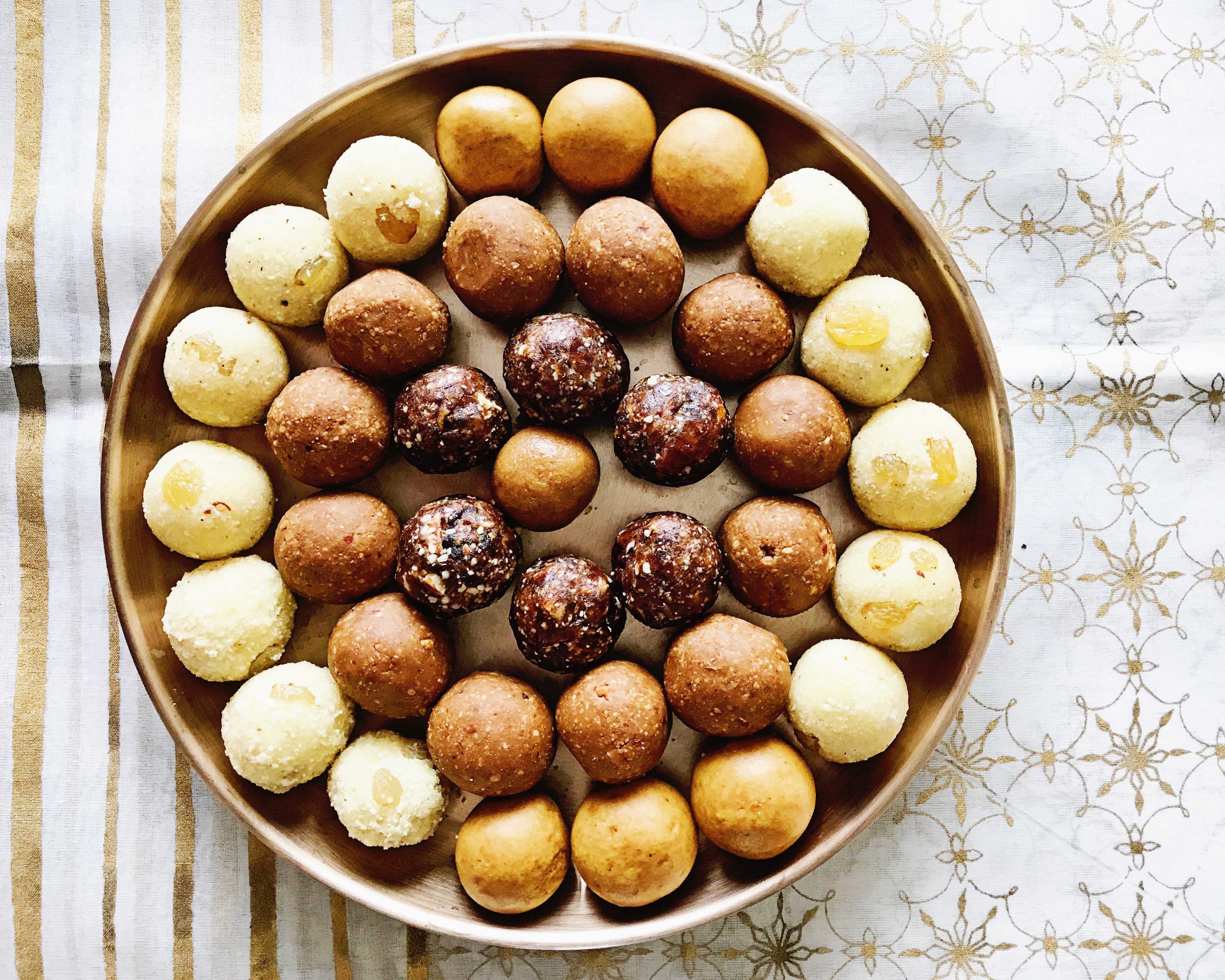Janmashtami Food & Rituals
- By Anushruti RKLoading...
- | 31 Aug 2018 1:26 PM IST
 X
X
My favourite festival is round the corner and like always I can't hold my excitement! Every year, I start planning for Janmashtami days before the festival and my kitchen comes alive with preparation of the foods I offer to Lord Krishna.

When I was a little girl, I loved Indian festivals with all their inherent charm - sweets, family reunions and new clothes! But it was only when I read the story of the birth of Lord Krishna from the Srimad Bhagavatam, that I began to celebrate this festival with all my heart.
On Janmashtami, my day starts early with the chanting of Vedic mantras and shlokas and decorating my temple. The rest of the day is a whirlwind, spent mostly in my kitchen. As midnight arrives, we do the abhisheka - a Vedic ritual where the deity is bathed and then clothed and decked with jewels. One ritual followed by thousands of devotees across the world is putting the Lord on a swing and chanting Vedic mantras at midnight. When it is time to break the day-long fast, we partake in the delicious food known as “prasadam”; food which is offered to the Lord.
If I love Janmashtami, what I love even more is Nandotsava, the day after Janmashtami; when I cook a huge feast for my friends and family. It is described in the Bhagavatam that this is the day that Nanda Maharaj, Lord Krishna's foster father, celebrated his birth in the most jubilant way. This story makes for a most delightful read in the Bhagavat Purana.
I try to cook a lot of recipes inspired from the holy land of Vrindavan on this day. Although I change the theme and dishes cooked each year, the one constant on the menu is the making of 5 different types of ladoos for the Lord.

The easiest of the five is the recipe I have shared below for the peanut ladoo. This recipe is made from just two fasting ingredients - peanuts and jaggery, and can be enjoyed by those who are abstaining from grains and eating only fasting foods.
Every year during Janmashtami, I dream about my favourite place in the whole world, the holy land of Vrindavan. With ancient temples, some of which are over 5,000 years old, forests known as Vans and the gushing Yamuna river, Vrindavan especially comes alive during the festival of Janmashtami. My heart and mind travel to the quaint bylanes of Vrindavan, yearning to hear the chants of the local brajwasis, pining for the sounds of ancient musical instruments and longing to taste the fresh butter laced lassis and crisp and spicy aloo tikkis sold on practically every street leading to an old temple.
It is unfortunate that I have not yet celebrated Janmashtami in Vrindavan, but I try to find magic in my Mumbai kitchen by making an effort to recreate the temple recipes of Vrindavan on the auspicious occasion of Janmashtami and Nandotsav.
Peanut Ladoo Recipe
These ladoos are best made with unbleached, unrefined and preferably organic jaggery. Makes about 24 bite-sized ladoos.
Ingredients:
- 2 cups roasted unsalted peanuts without skin
- 1 cup or ¾ cup jaggery*
- ½ tsp cardamom powder
Method:
- Grind the whole, roasted, unsalted peanuts without skin in a food processor. Work in short pulses and give the peanuts a few seconds to cool between each pulse or else you’ll end up with a sticky mass.
- Pulverise the jaggery with a mortar and pestle or with a metal potato masher.
- Assemble the powdered peanuts and jaggery in a bowl and with the help of a potato masher or with a mortar and pestle, mix the powdered peanuts, cardamom powder and jaggery.
- Alternately, after the peanuts are powdered, add the jaggery to the blender/mixer and blend until mixed and then form into ladoos.
- Form into balls with your hands.
* If you prefer your ladoos to be on the sweeter side and if you love jaggery, use 1 cup of jaggery.



